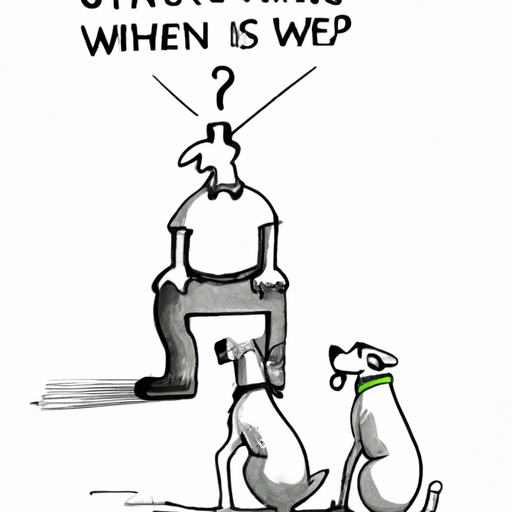As a dog owner, you’ve probably noticed some puzzling behaviors exhibited by your furry friends. One behavior that often raises eyebrows is when your male dog is humped by other male dogs. This can be an awkward situation, especially when it occurs in a public setting like a dog park. Why do male dogs hump other male dogs? Is it a sign of dominance, a play behavior, or is there more to it? Let’s dig deeper into the world of dog behavior to uncover the truth.
Table of Contents:
- The Science Behind Dog Humping
- Dominance vs. Play Behavior
- Sexual Behavior vs. Non-Sexual Humping
- The Role of Neutering
- When Should You Be Concerned?
- How to Discourage Humping Behavior
- Frequently Asked Questions
Key Takeaways:
- Humping is a common behavior among both male and female dogs, irrespective of their sex or neuter status.
- Humping can be a form of play, a reaction to stress, or a sign of a medical issue.
- Neutering your dog may help reduce humping behavior, but it’s not a guaranteed solution.
- As a dog owner, understanding your dog’s behavior can help you address any potential issues promptly.
The Science Behind Dog Humping
Humping, also known as mounting, is a common behavior exhibited by dogs. While it can be sexual in nature, it’s not exclusively a sexual behavior. According to American Kennel Club, it can also be a sign of excitement, play, dominance, or even stress.
Humping is seen in both male and female dogs, irrespective of their sex or neuter status. This behavior can be directed towards other animals, objects, or even people.
Dominance vs. Play Behavior
Dominance is often misconstrued as the primary reason behind dogs humping each other. However, experts at Onetopdog explain that humping is not always about establishing hierarchy. It can simply be a part of normal play behavior. The line between dominance and play can be blurry, and it mainly depends on the context and the individual dogs involved.
Sexual Behavior vs. Non-Sexual Humping
It’s easy to assume that humping is purely a sexual behavior. But that’s not always the case. Even neutered or spayed dogs, who are not driven by reproductive hormones, can engage in humping behavior. In these cases, humping can be triggered by non-sexual arousal or excitement.
The Role of Neutering
Neutering is often suggested as a solution to curb humping behavior. While it can reduce the behavior in some dogs, it’s not a surefire solution. According to Onetopdog, neutering can lessen the influence of hormones that may trigger humping, but it doesn’t eliminate the behavior entirely.
When Should You Be Concerned?
While occasional humping is normal, excessive humping can indicate a problem. It can be a sign of a medical issue, such as a urinary tract infection or skin allergy. It can also be a sign of anxiety or other behavioral issues. If your dog is humping excessively or causing distress to other dogs, it’s best to consult with a veterinarian or a professional dog behaviorist.
How to Discourage Humping Behavior
If your dog’s humping behavior is causing problems, there are a few strategies you can try. Training methods, such as distraction or redirection, can be effective. You can also consider seeking help from a professional dog trainer or behaviorist. Onetopdog provides insightful tips on training your dog effectively.
Frequently Asked Questions
1. Why does my neutered male dog hump other male dogs?
Even neutered male dogs can exhibit humping behavior. This behavior can be triggered by excitement, play, or dominance, and is not strictly sexual.
2. Should I be concerned if my dog is being humped by other male dogs?
If the humping behavior is not causing distress or harm to your dog, there’s generally no reason for concern. However, if your dog appears uncomfortable or the behavior is aggressive, it’s best to intervene.
3. Can training stop my dog from humping other dogs?
Training can be effective in managing humping behavior. Techniques such as distraction or redirection can help. It’s also beneficial to reinforce good behavior with rewards.
Understanding the why behind your dog’s behavior can help you and your furry friend navigate the complex world of canine communication. Remember, it’s always important to consult with a professional if you’re concerned about your dog’s behavior.



